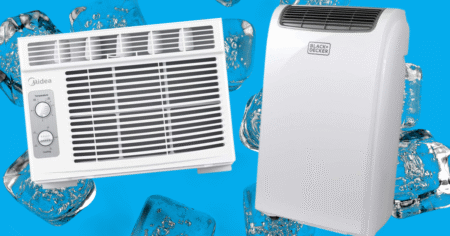Half the draw of going out to bars and restaurants (for some of us, anyway) is that you’re paying someone to take care of the dishes for you. And while these establishments typically have cleanliness down pat, accidents happen, and sometimes you’re served a beer with someone else’s lipstick on the rim.
Even absent any obvious smudges or smears, beer professionals can tell just by looking if a beer has been poured into a dirty glass. The trick is to pay attention to what the bubbles are doing.
“Bubbles clinging to the inside of a glass where it meets the liquid part of the beer are usually a sign some residue, such as grease, dust, leftover beer or detergent, is present,” said Sara Hobday, head of beer research and curriculum at the Wine and Spirits Education Trust, the authority that certifies sommeliers and other beverage professionals.
(For the perfect visual example of bubbles clinging to the inside of a dirty glass, check out these photos.)
But, you may be thinking, beer is a carbonated beverage. Shouldn’t I be able to see some amount of bubbles in the glass? Indeed, you should — but where and how that carbonation appears can tell you if a glass is perfectly clean or if it could use another run through the dishwasher.
Foam is a good sign — clusters of bubbles, not so much.
Picture the platonic ideal of a beer in your mind. It probably has a thick layer of foam on top, called the head. This isn’t the cleanliness giveaway we’re talking about; in fact, a nice, frothy head that lingers as you drink is a sign that a glass is clean.
“Poor head retention is also an indication of dirty glassware,” said Jessie Smith, a certified cicerone (the beer equivalent of a sommelier) who runs a beer quality-control business and teaches sensory education in New York state. “The beer should have some foam on top that lingers for the entire pint.”
There will always be variations from one beer to the next, but generally speaking, you should expect to see a decent layer of froth at the top that remains for the duration of the beer. There are two main reasons for this. For one, the foam itself tastes (and feels) good. Thick carbonation makes a beer taste creamy and rich, which are characteristics beer drinkers tend to appreciate. A proper head also acts as a sort of seal, protecting the flavor and aroma of the beer within. Exposure to oxygen will degrade the flavor of a beer, but a decent layer of foam locks it in and keeps aromatics from evaporating, helping it taste fresh and flavorful down to the last sip.
John Rensten via Getty Images
Another good sign to look for is called lacing. This is when that tasty, tasty foam sticks to the side of the glass as it empties. A clean glass, Hobday said, “allows for residual foam to stick to the walls as you drink your beer, forming a lace-like pattern of parallel rings on the empty glass.”
A beer with no head, a head that fizzles out quickly or a beer that lacks visible lacing are all signals that your glass may not be what professionals refer to as “beer clean.” Smith mentions a couple of alternate explanations, though.
“There is also the potential that the glassware is fine, but the taplines or beer itself is dirty or infected,” she said. Additionally, “there are very rare cases where taprooms still have cleaning solution left in the lines and this gets into the first beer pour of the day,” though this is most common at taprooms that offer self-pours, “where the consumer might not know what to look for when pouring a beer for themselves.” These cleaning solutions, she said, are typically blue or green, so in most cases it’ll be pretty obvious that something is awry.
So, how dirty is dirty?
Once you know what to look for, it can be hard to ignore when you’re served a beer in a less-than-pristine glass. Keep in mind, though, that clinging bubbles don’t really indicate a serious health hazard.
“It’s worth noting that beer (and other carbonated beverages) can draw attention to even a small amount of residue, which might otherwise go unnoticed,” Hobday said. It’s the kind of thing that would be negligible if it happened when pouring yourself a beer at home, though of course businesses have different standards for service and sanitation. The question is, is a bubbly glass a serious enough infraction to warrant sending it back?
First off, know that a not-so-clean beer is unlikely to make you sick — chances are, it’ll just dampen the experience a bit.
“We’re lucky to have the protection of alcohol, pH and hops in beer so that pathogens aren’t able to grow,” Smith said, and it’s also worth noting that industrial dishwashers often sanitize via heat, reaching temperatures too high for bacteria to survive. But, she said, “there are still some types of wild yeast and bacteria that can grow and infect a beer. The worst that would happen in that case would be that you wouldn’t want to drink the beer at all due to the off-flavors present or a mild stomachache if you drank the pint anyway.” Even in the case of residual cleaning solution, she said, you may experience unpleasant effects like a stomachache or burning on your tongue, but you probably won’t need to rush to a hospital.
That said, the quality of the experience is important, and any establishment that takes beer seriously will want to offer the best pour possible. Apart from the visual cues, beer in dirty glassware can sometimes have an off-aroma, which Smith describes as a “wet dog smell.” A funky-smelling beer is going to be markedly less enjoyable.
Whether to speak up ultimately falls to your own discretion, and it’s always worth considering the venue, too — it’s fair to expect more from a brewery taproom than your local dive bar.
“Most of the time, I don’t say something if visually there’s some bubbles or poor head retention in my glass,” Smith said, but she will if there’s, for instance, a lipstick stain or noticeable wet dog smell.
“In that case, that’s an off-flavor that the brewer didn’t intend to have in their final product, and it will always have a negative impact on the beer experience.”
But at any venue that’s serious about their beer, it’s fair to expect “beer clean” glassware.
“If your glass is looking less than clean, it’s likely to be affecting your experience of the beer, and you have every right to speak to the venue about this,” Hobday said. Just mind your manners — accidents happen, and no one is trying to poison you.
“Sharing feedback in a polite, constructive way is actually helpful for the venue because it gives them an opportunity to correct the issue for you and other customers,” Hobday said.
“So much work goes into crafting delicious beer. The presentation of beer in a glass is the final step of a long, complex process, and it’s so important to do it justice.”
Read the full article here








